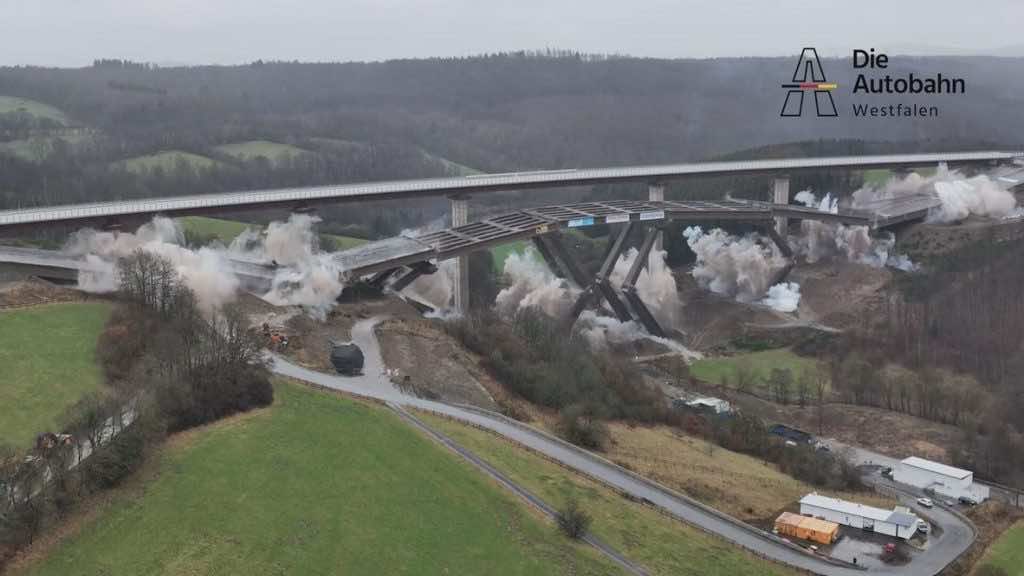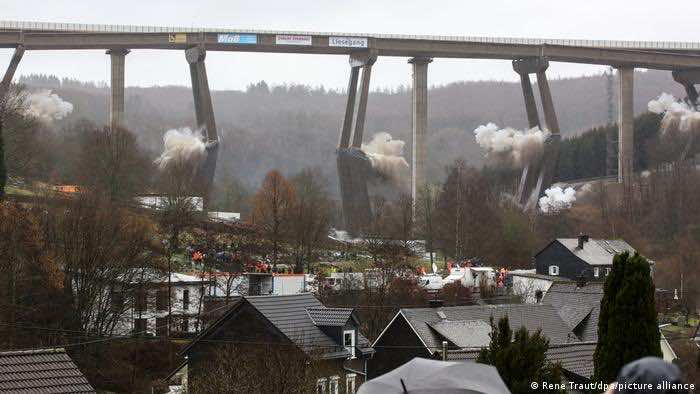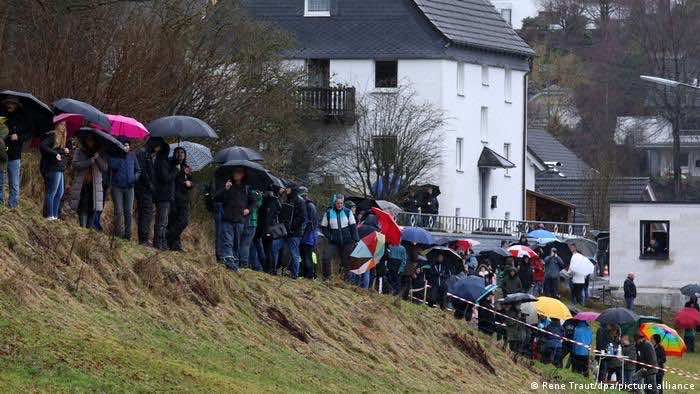On February 6, the Rinsdorf bridge in Germany was wrecked using at least seven high explosives in a deliberate initiative. It perfectly demonstrates how careful management combined with cutting-edge engineering propels societies ahead.
The demolition video makes it look simple, but in reality, that’s not the case Substantial planning, precise installation of shaped explosives, and a larger contingency plan, such as an alternative route across the bridge for Germany’s autobahn, were all required before anything burned to the ground.
Such a high highway bridge has never been blown up before in the Federal Republic. The Rinsdorf viaduct in North Rhine-Westphalia was demolished with around 120 kilograms (265 pounds) of explosives. The bridge was 70-meters-tall (230 feet) and spanned 500 meters (1,640 feet).

The explosives were earlier inserted in 1850 boreholes so that the bridge’s twelve pillars collapsed with a bang and plummeted to the earth together with the road surface.
The explosion establishes a new record in Germany, which has never previously blown up a bridge of this height. The 55-year-old structure came crashing down at 11 a.m local time (10 a.m. GMT). The bridge’s 16 pillars crumbled, and the road surface collapsed after demolition expert Michael Schneider gave the go-ahead.

“It was a picture-book blast,” said Schneider.
The collapse was organized such that the rubble would fall into a prepared bed, causing the neighboring new bridge minimal damage. In December 2021, the restored bridge will be inaugurated. Hundreds of people watched intently as the ancient bridge fell.

Sixty viaducts in North Rhine-Westphalia, Germany’s most populous state, require replacement or urgent repairs, with 15 already under construction or scheduled for completion this year.


